Easter Traditions Around the World
In anticipation of the long weekend, I asked the Chatterbug team what their favorite Easter traditions were. I expected nothing more than a thread of posts about how much chocolate everyone is used to eating over the holiday. But instead, I received a cookbook’s-worth of Easter recipes, heard our Chatterbees’ favorite childhood memories, and learned about traditions rooted in pagan beliefs that pre-date Christianity. Below is Chatterbug’s travel guide to some of the world’s Easter traditions.
Easter traditions in Germany
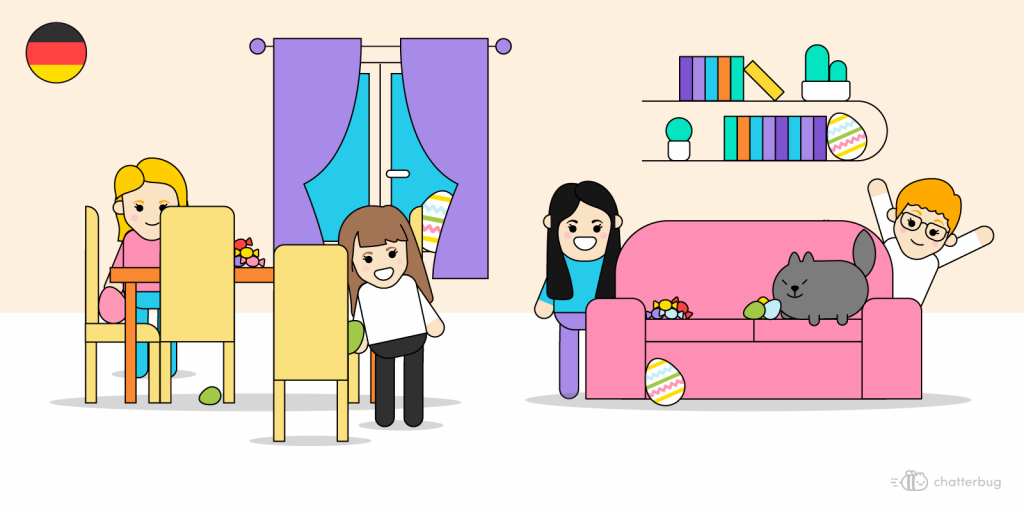
We begin our little journey in Germany and unsurprisingly, for our German Chatterbees Antonia, Franzi, Janina and Daniela, the holiday revolved mostly around chocolate and baked goods. Among them is the Osterlamm, a lamb shaped cake that usually makes an appearance in Grandma’s kitchen and in bakeries around this time.
Antonia’s family would “make decorations by blowing eggs and painting the shells to hang up on an Osterzweig”, which is a decorated tree branch, while Daniela’s mom found the most intricate ways to organize egg hunts whilst making sure that everyone got the same amount of treats.
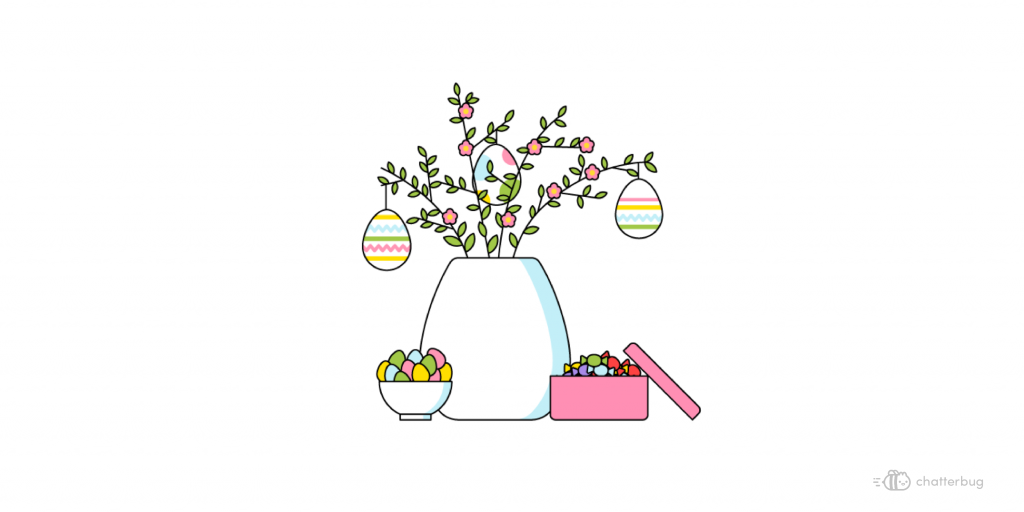
Daniela remembers how her and her “two sisters always had to search for Easter eggs in three different rooms” so they wouldn’t confuse their treats. “My mother a.k.a the Easter bunny would buy the best chocolate and other sugary treats and would think of the trickiest hiding places, like inside of our piano or on branches of plants. I always remember her cooking fish on Karfreitag (Good Friday) and eating Osterfladen (a Swiss easter tart), which I never liked because of the raisins.”
Easter traditions in France
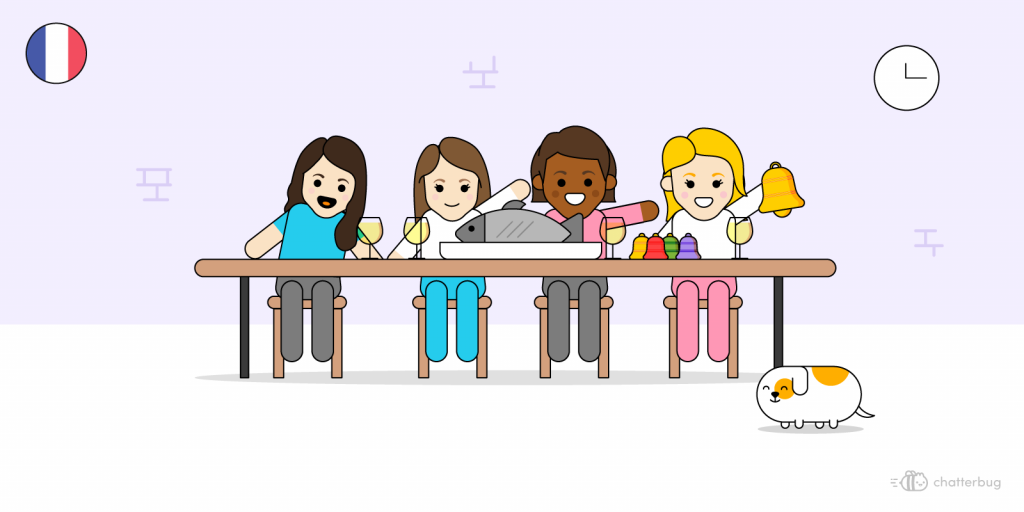
From their French Easter celebrations, Lauréna and Géraldine also remember egg hunts, large family meals around roast lamb, and of course mountains of chocolate in the shape of fish, hens and bells.
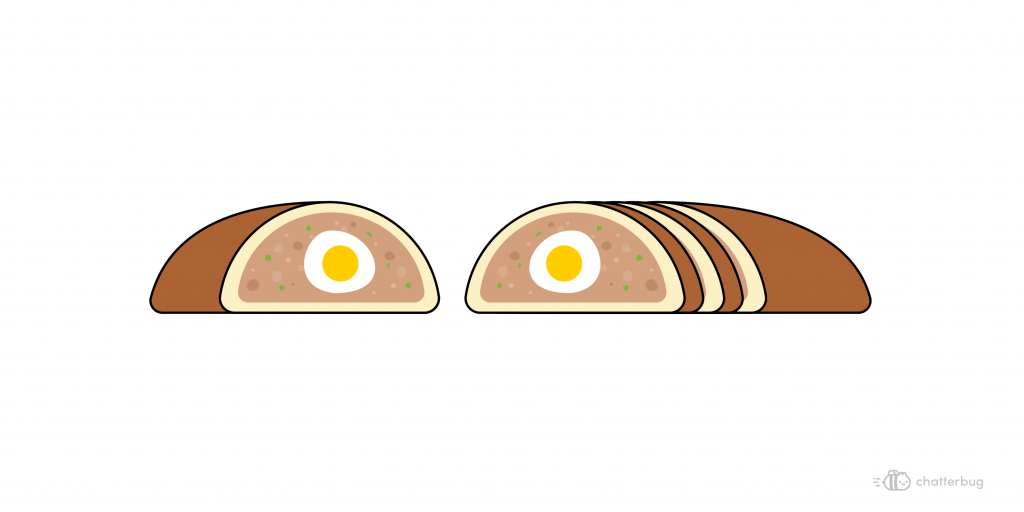
Lauréna also tells us of a typical dish called Pâté de Pâques (Easter pâté), which is a savoury pie filled with meat and hard boiled eggs. Legend has it that if you eat a pâté de Pâques made with eggs that were laid on Good Friday, you’ll be protected from snake bites for the rest of the year. If you were worried about that happening, now you know what to do!
Easter traditions in the U.K.

On the other side of the English Channel, Chatterbees Tom and Ryan tell us about hot cross buns, which are a spiced sweet bun filled with raisins and marked with a cross on top that’s typically eaten on Good Friday.
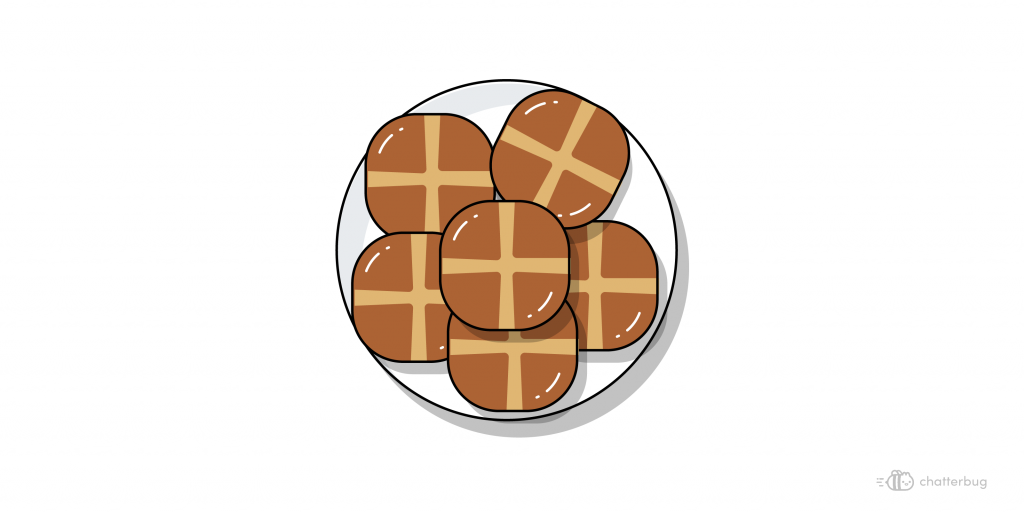
But the most interesting story came from Tom who told us about his family’s take on Egg Rolling. “My Grandma used to have us draw faces on hard boiled eggs then roll them down the lane”, says Tom, which got us interested in the history of this practice. Is the point to draw the faces of people we don’t get along with or is there more to this than vengeful egg smashing?
The tradition actually pre-dates Christianity as egg-rolling was common practice in pagan spring festivals all over Europe. The “breaking open of the egg was associated with the birth or renewal of the Earth in the springtime and people would celebrate their gods at this time of year by holding festivals in which egg-painting and egg-racing were common.” And although Tom’s family paints faces on their hard boiled eggs, the tradition is actually to decorate them any which way you want without setting score for old grudges.
Easter traditions in the U.S.

Across the Atlantic, egg rolling and egg hunts are also major landmarks of the Easter holidays. The White House Easter egg Roll, for instance, has been an annual tradition since 1878 but neither of our Chatterbees from the US ever took part in it.
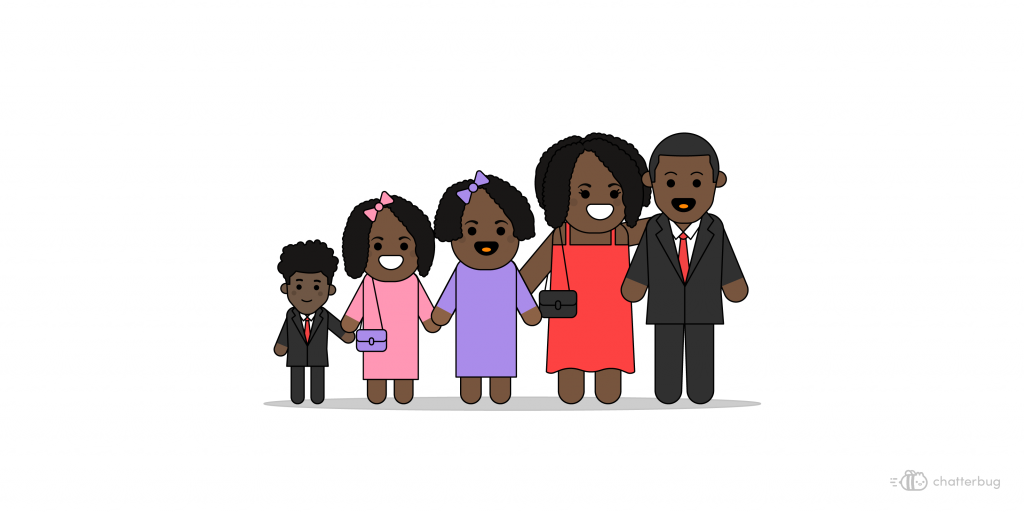
Instead, both Danielle and Megan remember waking up to “large Easter baskets filled with chocolate, toys and snacks”, and as they were sharing these childhood memories, a heated debate ensued over which one of the typical treats were the best. Megan swears by slightly stale Peeps, which are chick shaped marshmallows covered in sugar, while Danielle’s favorites were jelly beans with Easter flavors. What team are you on?
Easter traditions in Spain

Now it’s all well and good with the painted eggs and sweets but down in Spain where Maria-José grew up, she had never heard of egg rolling or even associated Easter with this food.
“The easter egg thing is so foreign to us that I didn’t hear of it until I moved to another European country”, she tells us. “For me, Easter – well, “Semana Santa” means huge parades of people carrying sculptures on their shoulders. Spain is a very Catholic country so this holiday is one of the most important ones there. Some people really get into the Semana Santa and will generally go to the hairdresser’s, wear their nicest clothes and look all round fabulous that week.
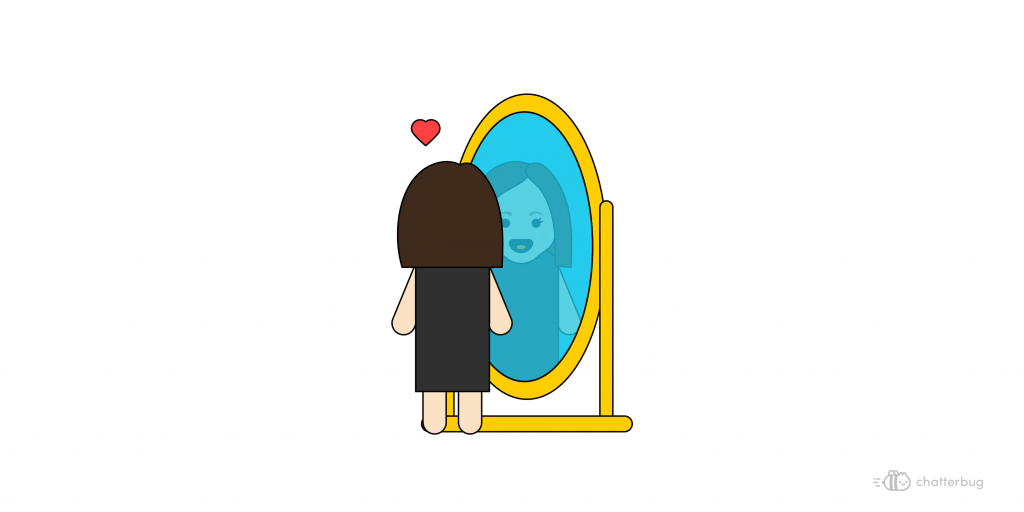
Regarding food, every region has its own recipes and habits but I think the most common thing is having “torrijas” (which are French toast sprinkled with sugar and cinnamon)”. Yum!
Easter traditions in Argentina
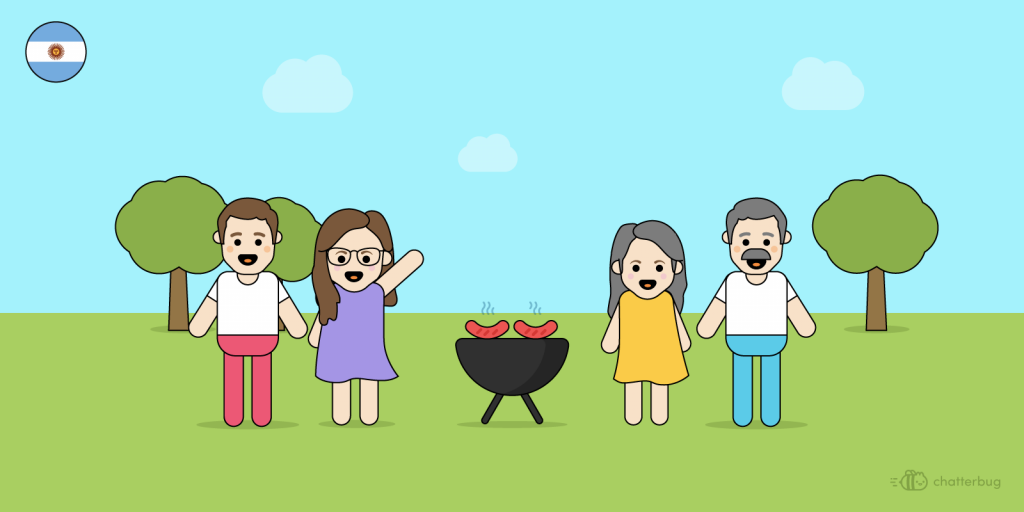
Our Chatterbee Inda, who recently wrote a blogpost on how living in Germany has changed her Latina habits, still associates Easter with very Argentinian food and traditions. On Good Friday, she tells us, “we usually have empanadas de vigilia (fish empanadas) and on Sunday, a huge BBQ with the extended family to make up for all the meat we didn’t eat the days before. For dessert, my mom would bake a rosca de Pascua, which is a giant profiterole filled with chantilly.”

And again, this culinary tradition is rooted in Pagan celebrations of antiquity. The “rosca” is thought to have originated in the north of Italy where round cakes were baked to mark the arrival of spring. Their round shape symbolized the concept of continuity and the earth’s eternal rebirth.
Easter traditions in Togo

We’re ending this little tour with an unlikely duo, which are Russia and a little country in West Africa called Togo. My mom is Russian, so Easter or “Paskha” as we call it, is a week or so later than in Western Europe. But the funny thing about my Russian family is that they are actually from a Muslim region in Russia called Tatarstan, so Easter isn’t exactly part of our culture.
And as if that wasn’t complicated enough already, I also grew up in the mostly catholic south of Togo and in order not to leave any part of our heritage behind, we would basically celebrate Catholic Easter first, then the Orthodox one a week or so later, and then also celebrate all the Muslim holidays.
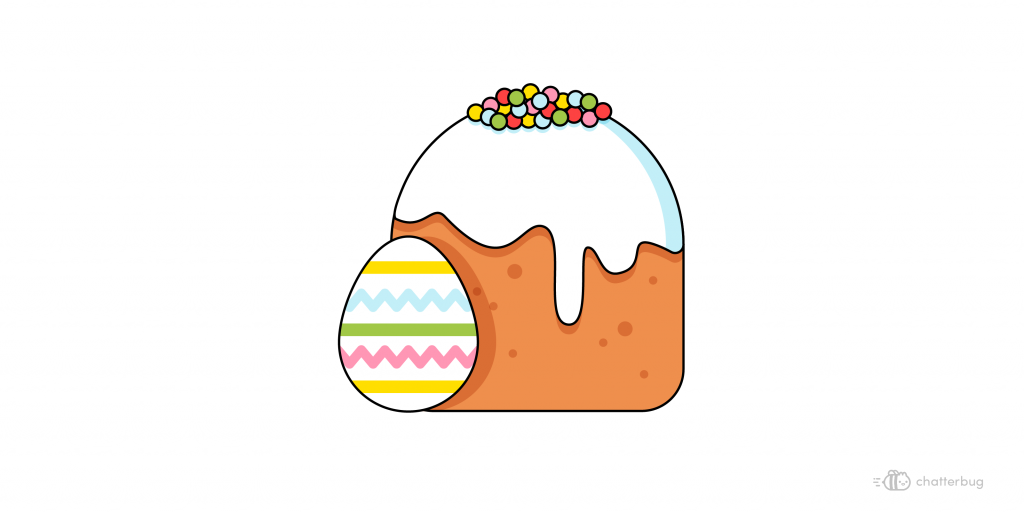
For each one my mother would make typical dishes and one year I remember painting boiled eggs at the beginning of April, having Kulich (a glazed Easter cake filled with raisins) a few weeks later on Orthodox Easter Sunday, and also watching my mother cook Pilaf, a South Asian rice dish with meat and raisins to celebrate the end of Ramadan. Talk about third culture kid huh!
That’s it for our little tour. We hope you learned as much as we did sharing these stories within the Chatterbug team.
Want to learn more?
If you’re ready for more culture and language fun from us, try out our language courses! We are Chatterbug, an online language school and we offer a two-week free trial including a private lesson with one of our qualified tutors, so you could start speaking for real! Our lessons are structured around exercises created by linguists and language teachers, so there will be no awkward silences – we promise!
You can also find us on Facebook, Instagram, or Twitter for more content!




